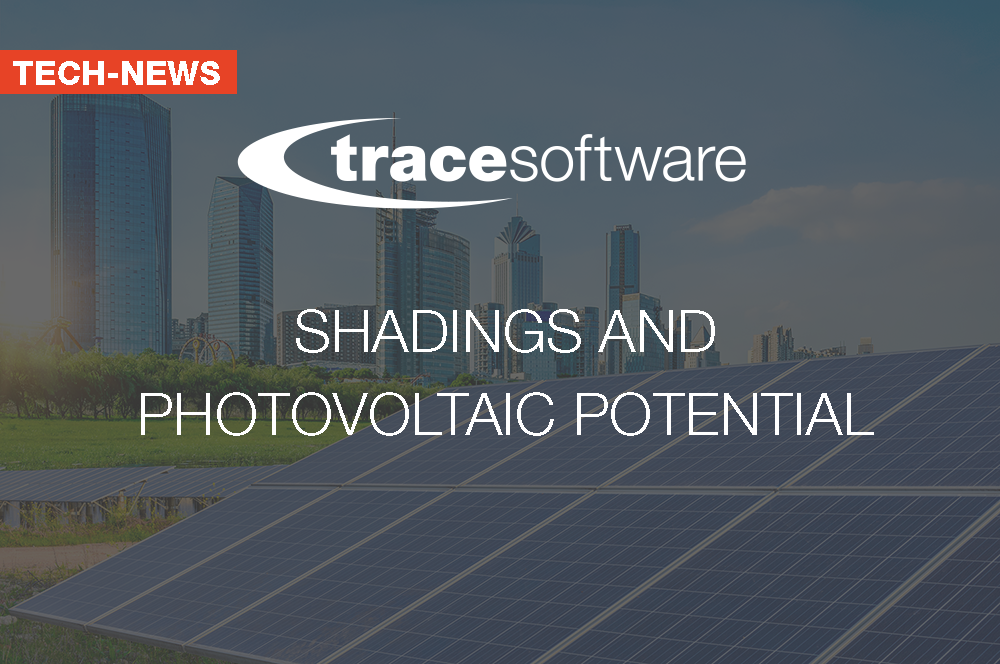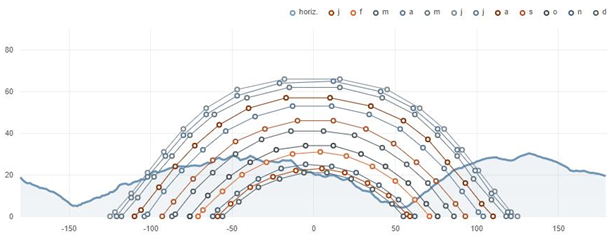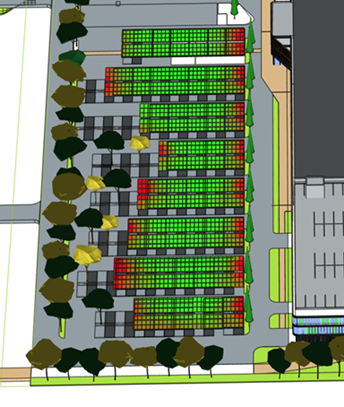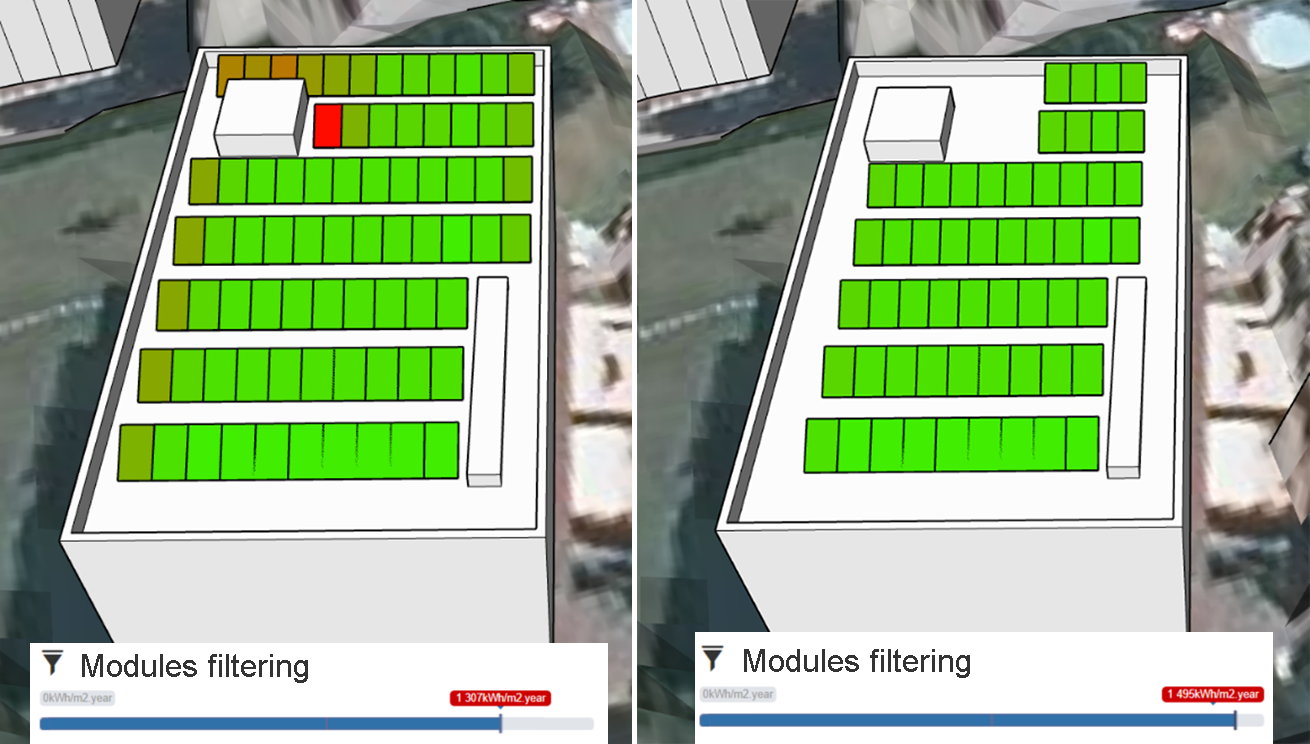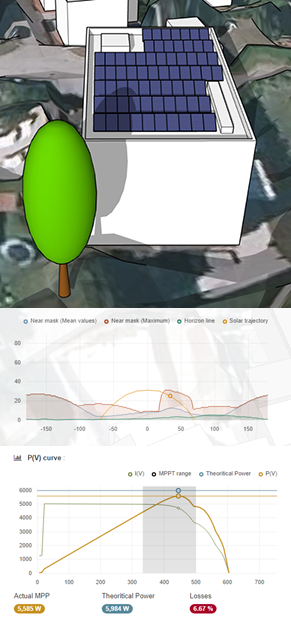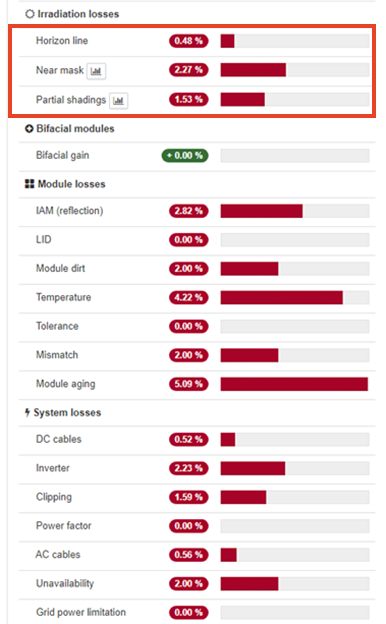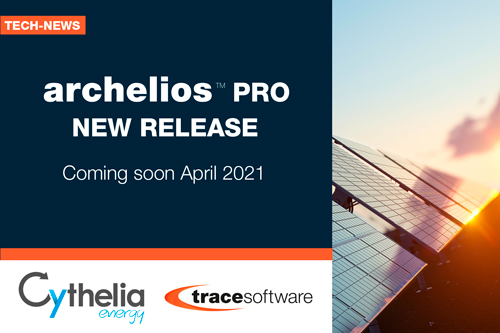Shadings and photovoltaic potential
The annual yield of a photovoltaic installation depends directly on the solar irradiation received by the modules that constitute it.
This information is accessible thanks to meteorological databases resulting from ground measurements or the analysis of satellite images. However, the information contained in these databases is not complete for two reasons:
- The data they contain relates to the irradiation received by a horizontal plane. As photovoltaic modules are mostly tilted (even at latitudes close to the equator where it is preferable to tilt them to favour their cleaning by rainwater), access to the irradiation in this tilted plane is done by a calculation that takes into account the different positions taken by the sun during the year.
- The second reason, which is the subject of this article, is that the modules can be shaded at certain times of the year.
“The distant mask is constituted by the relief surrounding the power plant in question.”
There are two types of shading (also known as masking): far shading and near shading.
The term “far mask” is used when it can be assumed that the variation in shading is small irrespective of the module considered, i.e. all modules are illuminated or shaded at the same time, and there cannot be modules in the shade and others receiving direct illumination at the same time. The distant mask is constituted by the relief surrounding the power plant in question. Often negligible on the plains, its influence can be very important in the mountains, especially in the deep areas at the bottom of the valley. The scheme below shows the far mask at Chamonix. For such a mask, the annual loss of received irradiation (at the optimum) is nearly 15%.
Far mask in Chamonix (archelios™ PRO)
The same picture shows that the loss in winter, when the sun is low above the horizon, is much greater than in summer. For systems for which all energy is fed into the grid, only the annual loss is to be considered. However, for self-consumption systems (connected to the grid) or isolated systems, this higher winter loss must be taken into account in the sizing.
For a long time measured with a clinometer or photo analysis tools, the far mask can now be calculated with topographic data. This is the case with archelios™ PRO, which allows this calculation at any point on the globe, based on NASA’s Shuttle Radar Topography Mission (SRTM) data, which resolution is 100m.
The presence of a near mask implies that the illuminance received at a given time is not the same depending on the module considered on the plant. The near mask can be “internal”, such as that caused by rows of modules or roof overhangs, or “external” such as trees or surrounding buildings.
The accurate consideration of close “external” masks requires 3D modelling. Thanks to a plugin directly available in the 3D SketchUp editor, archelios™ PRO enables an integration of the various obstacles present and a visualization of their impacts at the module scale.
Estimate of the solar potential at the module level
It is possible to filter the module by module according to the level of radiation received to keep only the best exposed.
Filtering of modules according to the annual irradaition received
“A string of modules is impacted as soon as shading affects one of the modules in it.”
At this stage, the most time-consuming and tedious task is to model the 3D environment of the plant. SketchUp remains an easy-to-use software, but what dimensions should be entered for the obstacles? Of course, on-site surveying is still possible… but time consuming.
Unless only modules that are not affected by shading are considered, the impact of shading does not stop at the calculation of the average irradiation received by the modules. In fact, depending on the extent of shading and the way the modules are wired together, the effect on the yield is far from negligible: a string of modules is impacted as soon as shading affects one of the modules in it. This partial shading effect will be nil for an installation equipped with microinverters or optimisers, and will be more or less significant depending on the cabling chosen by the designer. Thanks to its advanced wiring features, archelios™ PRO allows the user to quickly test and compare several wiring configurations.
Effect of shading on the PV array Yield at a given time
Annual losses due to mask
Video
Article written by Ismaël LOKHAT, Scientific Manager Cythelia Energy

